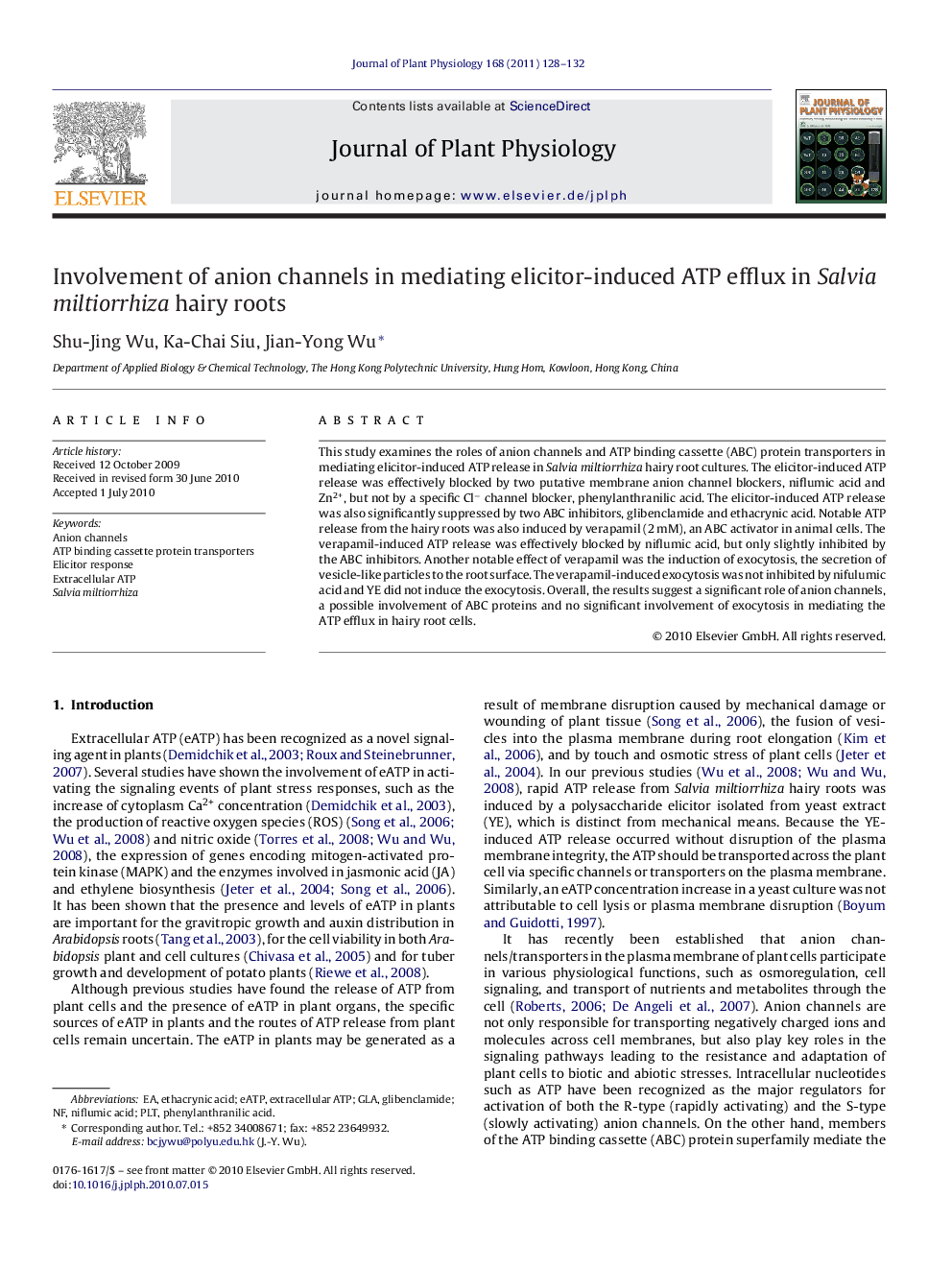| Article ID | Journal | Published Year | Pages | File Type |
|---|---|---|---|---|
| 2056694 | Journal of Plant Physiology | 2011 | 5 Pages |
This study examines the roles of anion channels and ATP binding cassette (ABC) protein transporters in mediating elicitor-induced ATP release in Salvia miltiorrhiza hairy root cultures. The elicitor-induced ATP release was effectively blocked by two putative membrane anion channel blockers, niflumic acid and Zn2+, but not by a specific Cl− channel blocker, phenylanthranilic acid. The elicitor-induced ATP release was also significantly suppressed by two ABC inhibitors, glibenclamide and ethacrynic acid. Notable ATP release from the hairy roots was also induced by verapamil (2 mM), an ABC activator in animal cells. The verapamil-induced ATP release was effectively blocked by niflumic acid, but only slightly inhibited by the ABC inhibitors. Another notable effect of verapamil was the induction of exocytosis, the secretion of vesicle-like particles to the root surface. The verapamil-induced exocytosis was not inhibited by nifulumic acid and YE did not induce the exocytosis. Overall, the results suggest a significant role of anion channels, a possible involvement of ABC proteins and no significant involvement of exocytosis in mediating the ATP efflux in hairy root cells.
